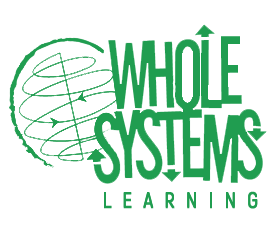Know Thyself
The journey begins and ends with Know Thyself. This command is written on the temples and universities of ancient Africa (Kemet) and is the guiding principle that all answers lie within. No amount of services will create safety, belonging, self-esteem until the young genius finds that safety within by knowing why they have come to this life, the purpose of their pain and the mission that is calling them.
Know Thyself consists of a set of tools, which protect against the challenges of racism, trauma, and prevention of opportunity resulting from institutional bias. These tools empower the individual/group to look deep inside for the power to act beyond the forces they face. These tools provide a path to a different world view, mental models, and life narratives allowing meaning and wisdom to come forth. These biological, psychological (intrapsychic, cognitive, emotional, post-traumatic growth), social, and spiritual protective factors already exist, and will be further developed over the length of the course to enhance resilience, and unleash it into the brilliant future of the student.
Fundamental to the core issue of IDENTITY, Know Thyself goes back more than 10,000 years to rectify historical misconceptions about Black culture, and rectify the misconceptions of the young people about themselves. For these Black youth to KNOW THEMSELVES, they must know their culture, their religion, their language, their history. They must be able to connect their current cultural practices with that that existed for tens of thousands of years. They must connect to their ancestors, and the knowingness in their heart with historical truth. They must also connect with their sovereign self, so a central theme is the identification of gifts and talents, and the understanding that the source of financial abundance lies in the development of those gifts.
The framework for knowing, for learning, for reframing, is a set of principles, which form the cultural base of the program. There are six basic principles: Truth, Spirit, Respect, Power, Money, and Commitment. In the chart below, the learning cycle is shown in the context of the principles, and each of the principles is aligned to specific protective factors.
TRUTH
I am unique and important: I have a purpose; Failure is the only way to success. Who A I and What am I?I am an eternal being, connected with the ancestors.
VORTEX/SPIRIT
The GIFT IN THE WOUND: Rage and Accepting people/things for what they are. What’s good about it.
RESPECT
I am great and I come from greatness. I am not a mistake; I am good and right. Social historical, cultural and political analyses of the existence of African People. I Respect my intellectual genius: I respect my brilliance, dream, emotions. The purpose and rightness of my behavior; What’s good about it?
POWER
What others do has nothing to do with me. I look past ALL obstacles and take ALL responsibility so no one and no thing can stop me from getting what I want.
I commit to my potential, who I really am. I accept that I am where I SHOULD be, that I can go into the unknown and run toward the roar.
MONEY
I know that money is within ME, not outside of me and that it exists in every creative idea in side of me. I admit that my experiences and purpose already contains the seeds of my abundance and that I will invest in myself through sacrifice and struggle.
COMMITMENT
I commit to my word, to integrity, trust, reliability, the ability to change, personal power.
KNOW SELF SUFFICIENCY Services
Obtaining birth certificate, social security card, and CA id, and registering for paid work experience with LA County workforce agency.
Career Exploration, Life Skills Planning
College Enrollment and Registration, FAFSA/other financial aid applications
KNOW SELF DETERMINATION Services
Housing, connecting with housing providers
Transportation assistance, including vehicle acquisition, obtaining driver’s license, insurance, AAA, registration, inspections finding a good mechanic
Money Management: multiple sources of income, budgeting, borrowing and lending, online banking and checkbook balancing, financial literacy: saving/investing, credit union vs. traditional bank

